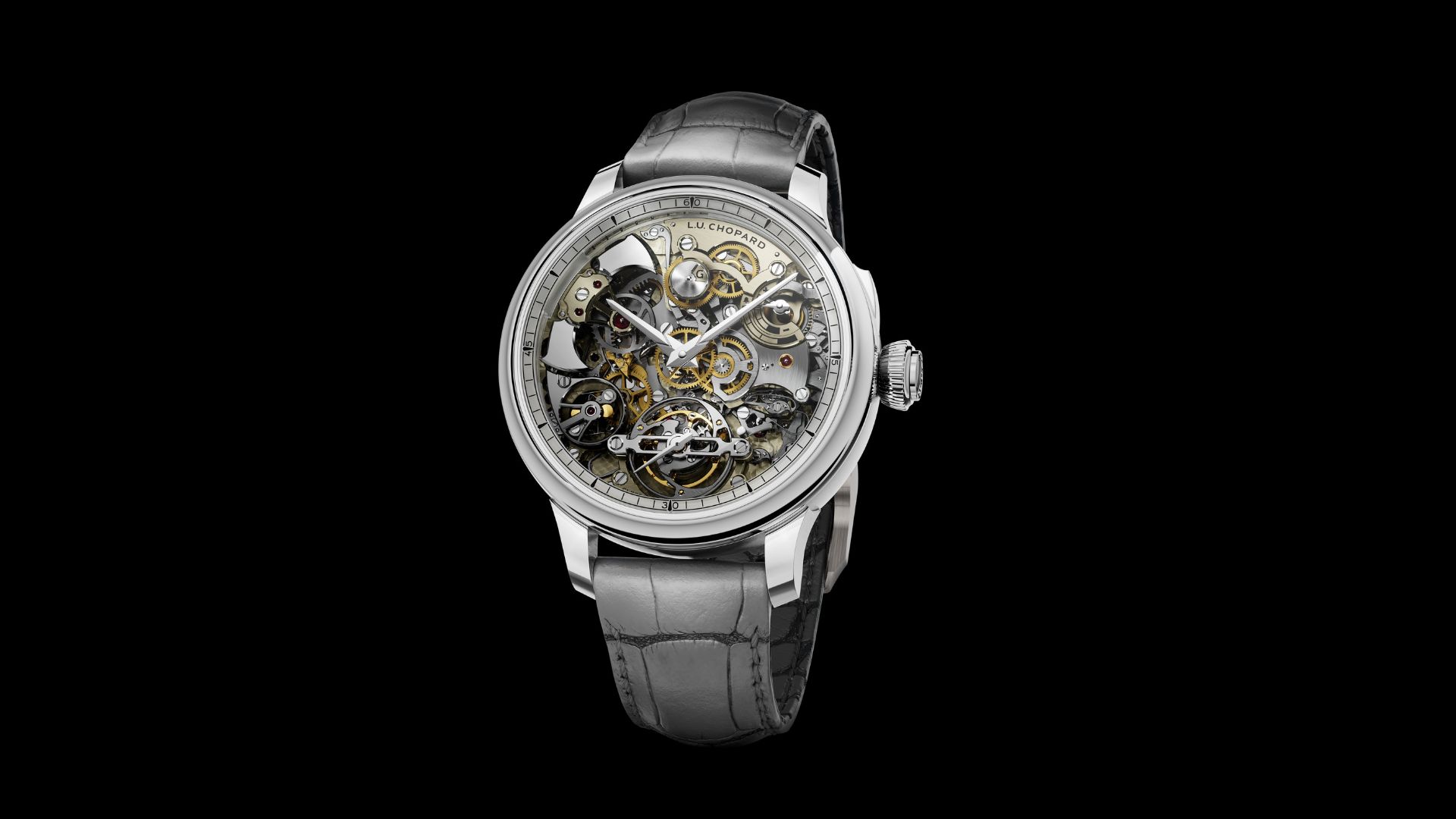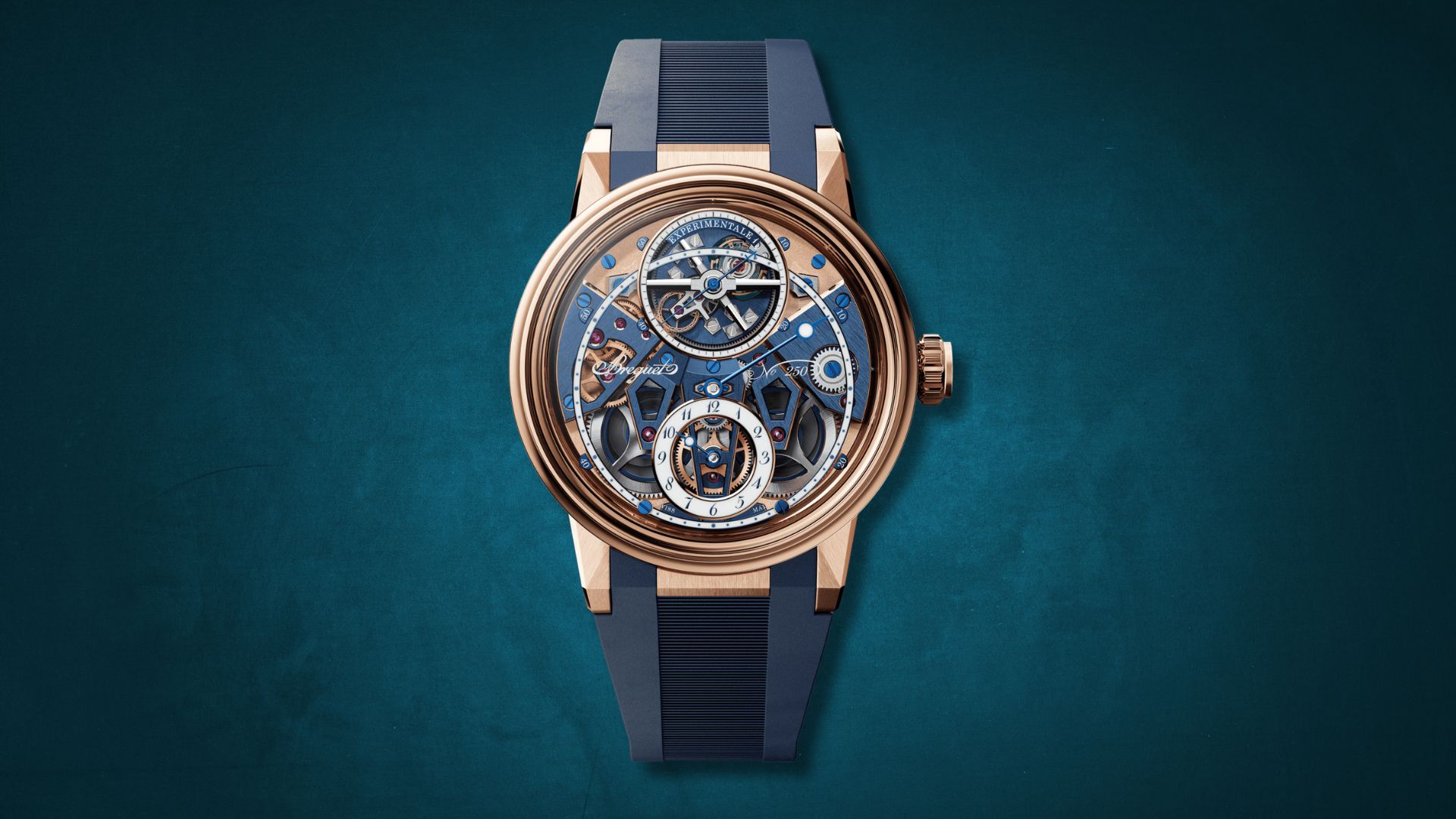Champion Calibres: Jaeger-LeCoultre Unveils Two New Limited-Edition Master Hybris References


The calibre (or movement) of a watch can be compared to the engine of a supercar as it powers the timepiece, enabling all its operations and ensuring precision. In other words, the calibre is the heart of a timepiece, precisely created with delicate mechanical components that are often handcrafted or finely calibrated. Jaeger-LeCoultre’s latest iterations showcase two such calibres, attesting to the brand’s engineering genius.
The two novelties added to the watchmaker’s Hybris collection include Master Hybris Artistica Calibre 184 (Ref. Q5252470) and Master Hybris Artistica Calibre 945 ‘Dragon’ (Ref. Q52624A3). Each is limited to only five pieces, honouring the respective calibres.
MASTER HYBRIS ARTISTICA CALIBRE 184
Jaeger-LeCoultre has unveiled a fresh take on Calibre 184 this month. Designed in 2019, this movement combines a perpetual calendar, a minute repeater that plays the Westminster chime, a one-minute constant force mechanism, a dead-beat minute hand, and a leaping date display with the smallest form of the bi-axial Gyrotourbillon.

The watch comes in a 43 mm 18 ct pink gold case, with lugs, a crown at 3 o’clock, and the pushers on the left side of the case. Calibre 184 unites three of the greatest complications in the history of watchmaking: sound, precision, and astronomical complications.

The black grand feu enamel dial gets golden geometric decorations and a black sapphire subdial at 12 o’clock that displays the time and the perpetual calendar; below 12 o’clock is the year window, while the month window is at 3 o’clock and the day of the week window at 9 o’clock. The date is on the ring surrounding the dial, with even dates marked in dots; it is denoted by a red-tipped hand. The spaces between dates are uniform, except for 16 and 17, which are separated by 60 degrees; there is no seconds hand. The openworked lower half of the dial is dominated by the Gyrotourbillon, on each side of which the repeater hammers are set like wings. Set beneath them, the distinctively curved gongs are treated with black to sync perfectly with the overall colour palette.

Jaeger-LeCoultre has added a plate with the same geometric pattern as that of the dial, completed in black lacquer, to each side of the case, using the case sides as a canvas to relate to the new dial ornamentation. The way the minute repeater is operated on the casing further demonstrates the attention to detail. To maintain the case's lines, the designers have created a retractable pusher that is integrated into the case, as opposed to a standard slider or a straight forward push-button.

The fifth edition of the redesigned and smaller Gyrotourbillon can be found in Calibre 184. The smaller size has allowed for the addition of a minute repeater without significantly thickening the calibre. Because the one-minute constant force mechanism makes the minute hand beat every 60 seconds (much like a dead-beat seconds hand), Jaeger-LeCoultre's engineers have included it to guarantee a steady flow of energy to the Gyrotourbillon.

The minute repeater also benefits greatly from the constant force mechanism. The minute repeater normally chimes the time one minute fast or slow if it is turned on at any moment in between minutes. It will always chime the exact minute displayed by the hand because of the beating minute hand. Calibre 184's minute repeater plays the Westminster carillon, a classic song associated with the clock tower housing Big Ben at London's Westminster Palace. Calibre 184 requires four hammers, which are stacked in pairs to strike the gongs at the same angle.

Calibre 184 includes patented inventions, including trébuchet hammers, which hit the gong more solidly, and crystal gongs, which are named after their direct connection to the front crystal, allowing for a cleaner transfer of sound and higher volume. The mechanism also includes Jaeger-LeCoultre's trademark time-lapse reduction mechanism, which provides a smooth cadence regardless of what time it chimes. Furthermore, the minute repeater calibre possesses two distinguishing characteristics: the gongs are curved outwards to meet the hammer at its natural strike position and they feature a square, changeable profile, allowing for a bigger strike area and cleaner strikes. The perpetual calendar considers the disparities between celestial body cycles and normal civil timekeeping units.

As a result, the calendar only requires human adjustment in centenary years that are not leap years. The first time this will be required is in the year 2100. Manual-winding Calibre 184 delivers a 50-hour power reserve. Turning the watch over showcases the sapphire open caseback, and the plates have been openworked to provide a clear view of the calibre, including the Gyrotourbillon and the governor for the minute repeater, which uses friction and centripetal force to regulate the speed at which the time is chimed and shortens the silent intervals between chimes. The bridges are hand-bevelled; sunrayed Côtes de Genève radiate from the perpetual calendar’s anchor-point, and heat-blued screws are set into hand-bevelled and polished sinks. Several bridges are microblasted. The watch is finished on a black alligator strap with small scale lining. This model will also be available in 18 ct white gold.
MASTER HYBRIS ARTISTICA CALIBRE 945 ‘DRAGON’

This novelty is slightly larger as it is housed in a 45 mm 18 ct pink gold case, with lugs and a crown at 3 o’clock. It took 50 hours to create the bezel itself, which is hand-engraved with scales that match those on the dragons’ bodies.

The dial is built on various layers to remind one of the night sky. The dragons, embellished with delicately hand-engraved scales, crawl along the edge of the raised and domed sky chart disc, drawing the eye to the Cosmotourbillon, a celestial flying tourbillon orbiting the watch face. The dragons and the sky chart accompany Jaeger-LeCoultre’s patented Cosmotourbillon, positioned at 6 o’clock, as it completes a full cycle of the dial in a single sidereal day, which lasts 23 hours, 56 minutes and 4.1 seconds, and is measured by Earth's rotation in reference to fixed stars. In contrast, a solar day, which lasts 24 hours, is determined by Earth's orbit around the Sun.

The deepest level of the dial, a matte black sandblasted disc, is visible along the edge of the celestial chart and beneath the tourbillon; around its circumference, the names of the months and the tourbillon seconds are marked in white. A sun-shaped gold pointer indicates the zodiac calendar's months and dates. The dial features three concentric circles with solar time indices, each with unique surface ornamentation for visual depth. The watch has three rings: an opaline inner ring for 24 hours, a silver opaline outer ring for minutes, and a circular brushed 12-hour ring with golden indexes. There are dauphine hour, minute hands at the centre in 18 ct pink gold.

The celestial vault shows the Northern Hemisphere night sky as seen from the 46th parallel, Jaeger-LeCoultre's residence in Vallée de Joux. It tracks constellation positions in real time. The Cosmotourbillon not only regulates the calibre, but also measures time by completing an anti-clockwise circle of the dial in a single sidereal day. Powering the watch is manual-winding Calibre 945 with a 40-hour power reserve. Additionally, it combines astronomical complications with a minute repeater. Turning the watch over showcases the sapphire open caseback with four screws on the outer periphery, engraving of the individual watch number out of five, and heat-blued screws. Finishing the watch is a black alligator leather strap with small scale alligator lining.



















